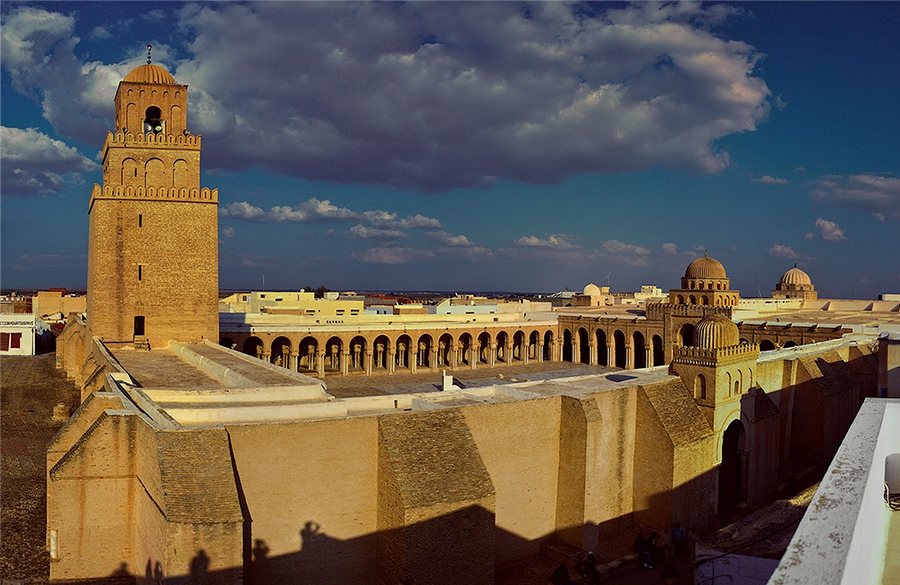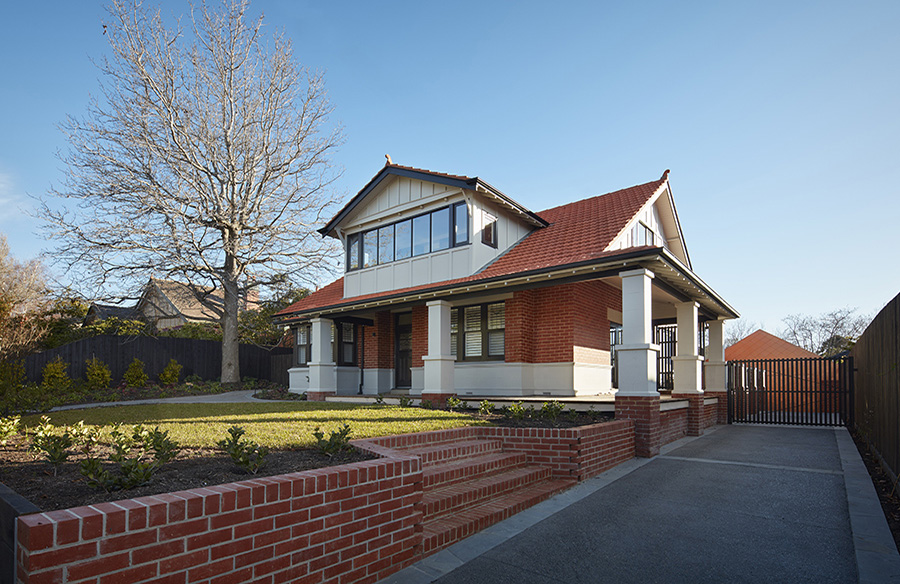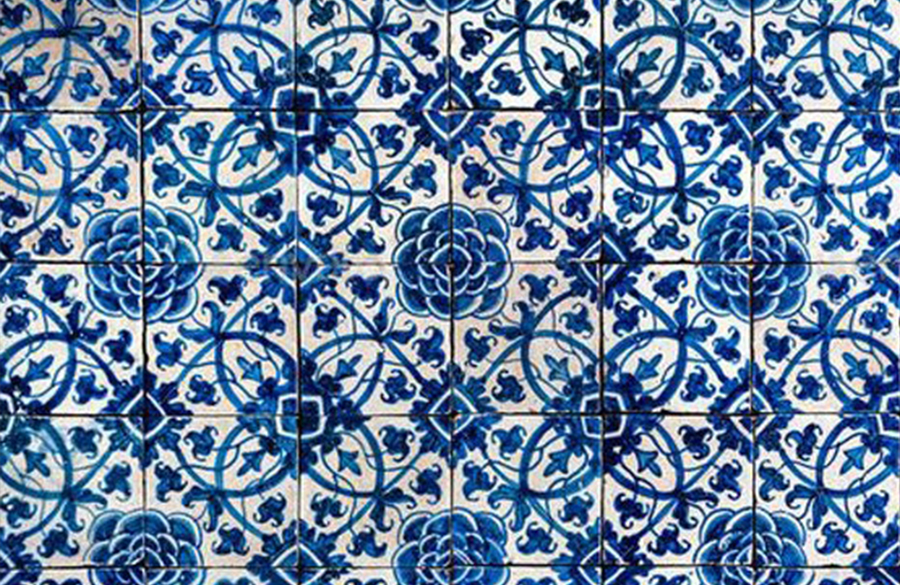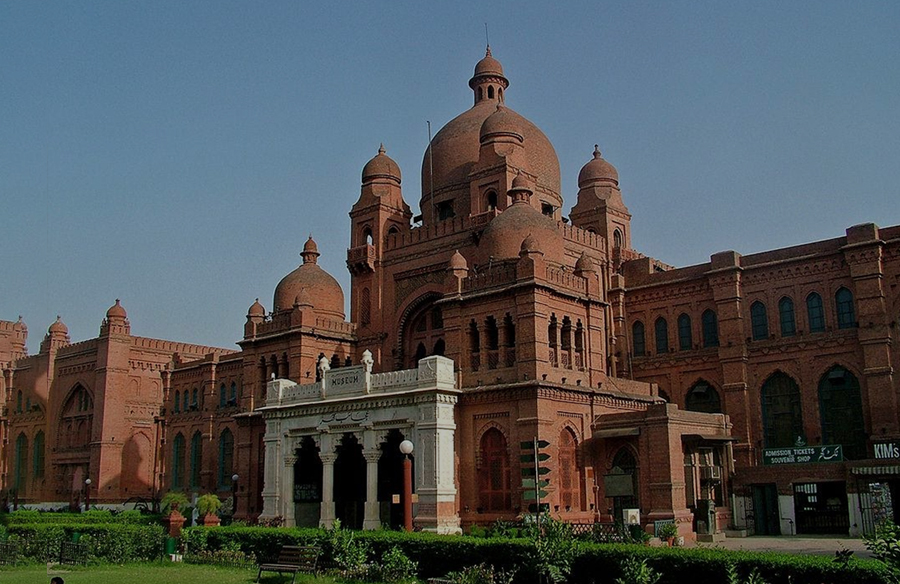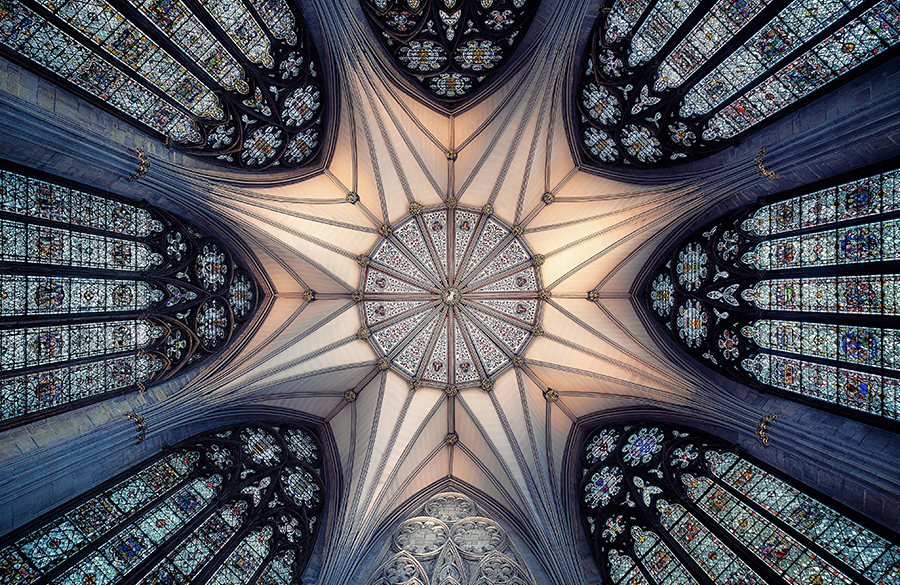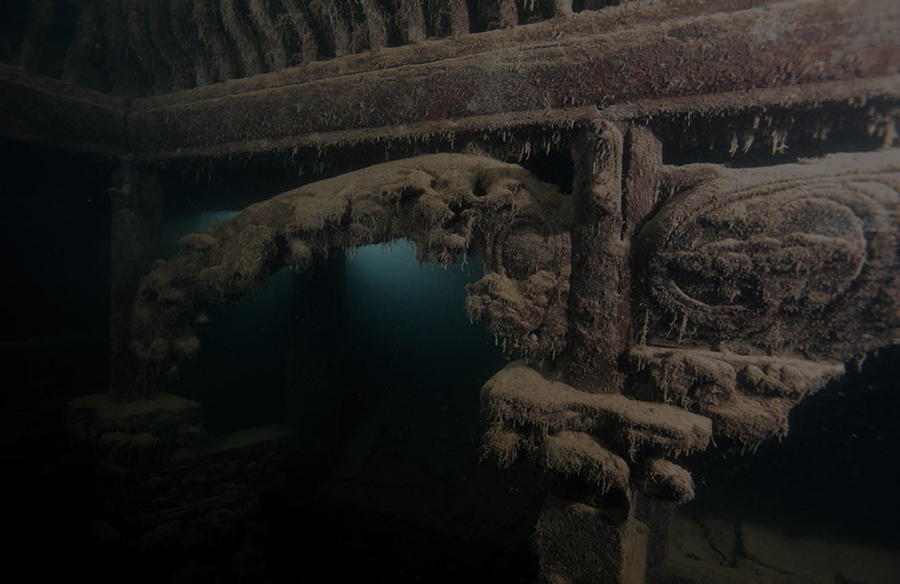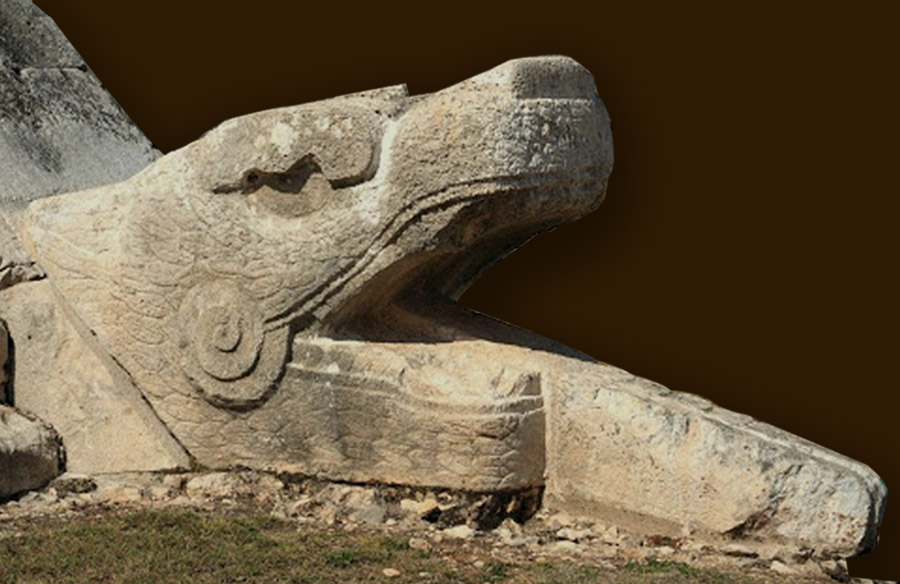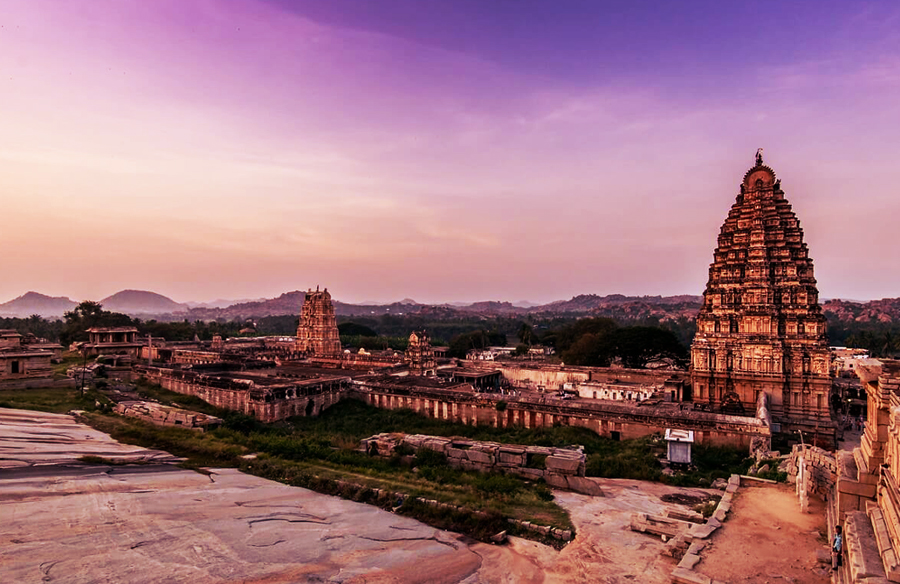Islamic Architecture is a process that has been observed and progressed over the years, tangible traces of a culture so diverse, and rich in its expression, each line and curve represented geometrically. Intricacy in the bedecked walls of each structure is a praise to the historical magnitude of the presence of these empires.
Islamic Architecture is essentially defined by mosques, tombs, fortresses, residences, and geometric gardens, each carrying key elements of recognition to assimilate into this beautiful style. Apart from the structural integrity concerning site context, the elaborate details in the interiors consisting of beautiful floral filigree, metal inlays, etchings of scriptures, painted mosaics, and sculptural art, are a defining characteristic of the Islamic designs.
Listed below are 15 UNESCO World Heritage Sites for Islamic Architecture.
1. CITADEL OF ALEPPO
The Citadel of Aleppo has been home to many civilizations- The Greeks, Byzantines, Ayyubids, and Mamluks, although the larger part of the citadel that exists today has originated during the Ayyubid times.
This fortified palace sitting atop a hill in the middle of the Syrian city, Aleppo, is one of the oldest and largest castles in the world. It is a specimen of Islamic military architecture with the ramparts safeguarding residences, storage chambers, mosques, and other defensive installations to hold out against a siege during wartime.
The castle was designed to impede enemy advancements into home territory. A moat circled the large walls of the fort, accessed by a steep stone bridge supported by seven arches. The citadel is recognized as a part of the heritage of the Ancient City of Aleppo.
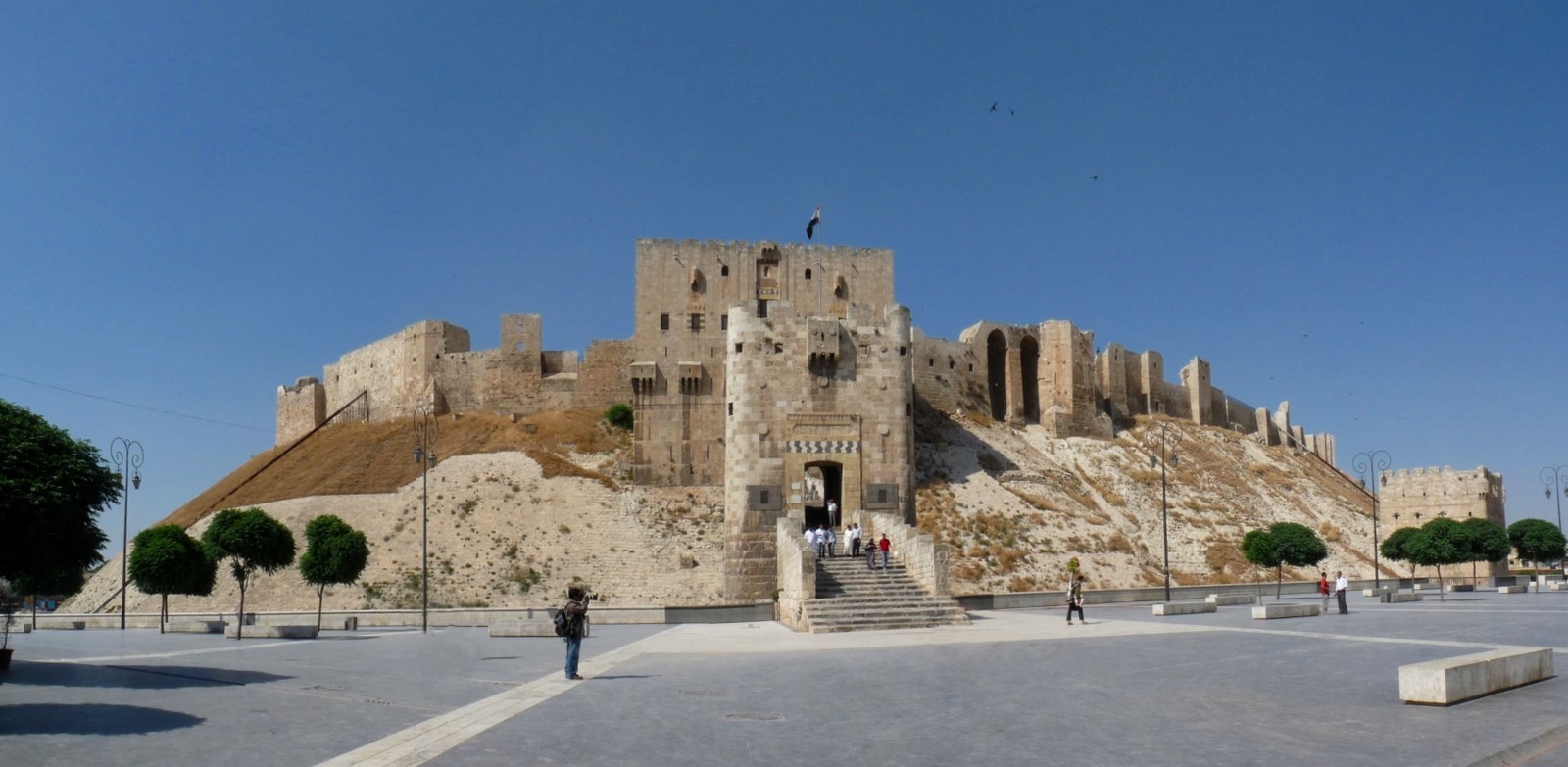
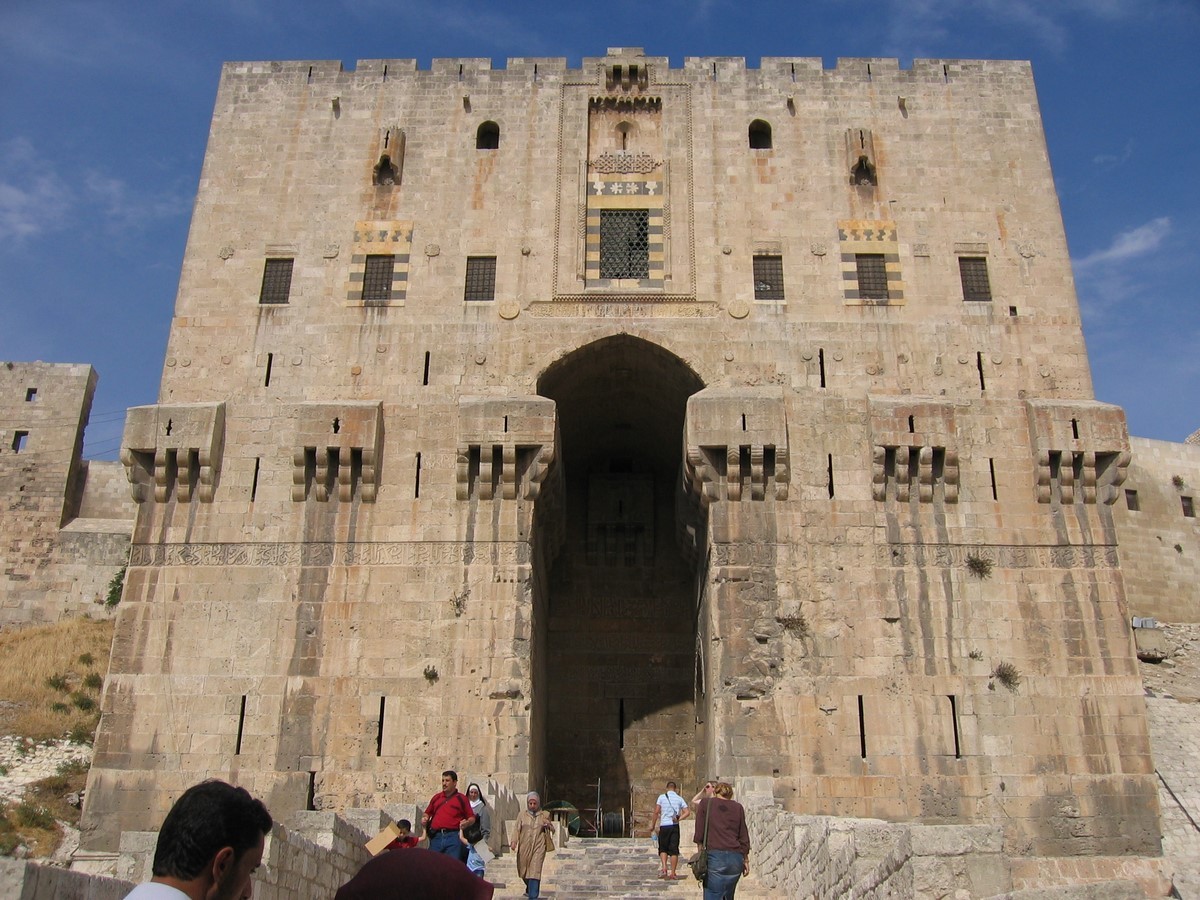
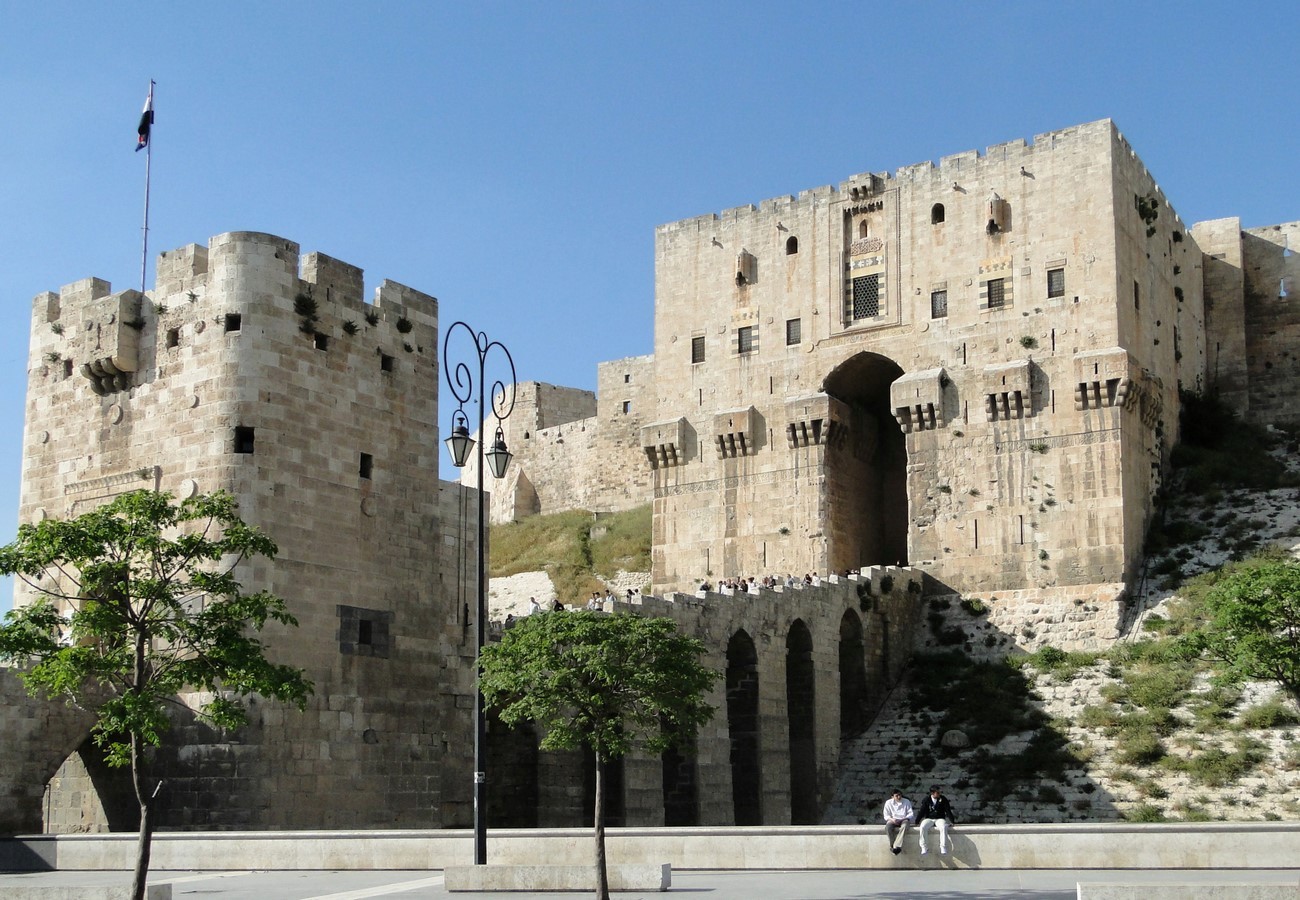
2. THE GREAT MOSQUE OF SAMARRA
A spiraling mass of sandstone bricks towers over the city of Samarra, Iraq, the remains of the Great Mosque of Samarra. This minaret adjacent to the rectangular ruins of the mosque finds its influence from Mesopotamian ziggurats extrapolated into Islamic architecture. Commissioned in the 9th Century CE by the Abbasid Caliph, the mosque with the Malwiya tower (spiral minaret) was once the largest mosque ever made.
The minaret has an unusual conical, spiral, and tapering form. This minaret was connected to the mosque structure by a bridge. Now partially damaged as a result of being exposed to modern machinery, it stands at a height of 52m, with a 33m base.
The Mosque and its minaret were declared as Heritage structures by UNESCO for their uncommon architectural style and presence in the world.

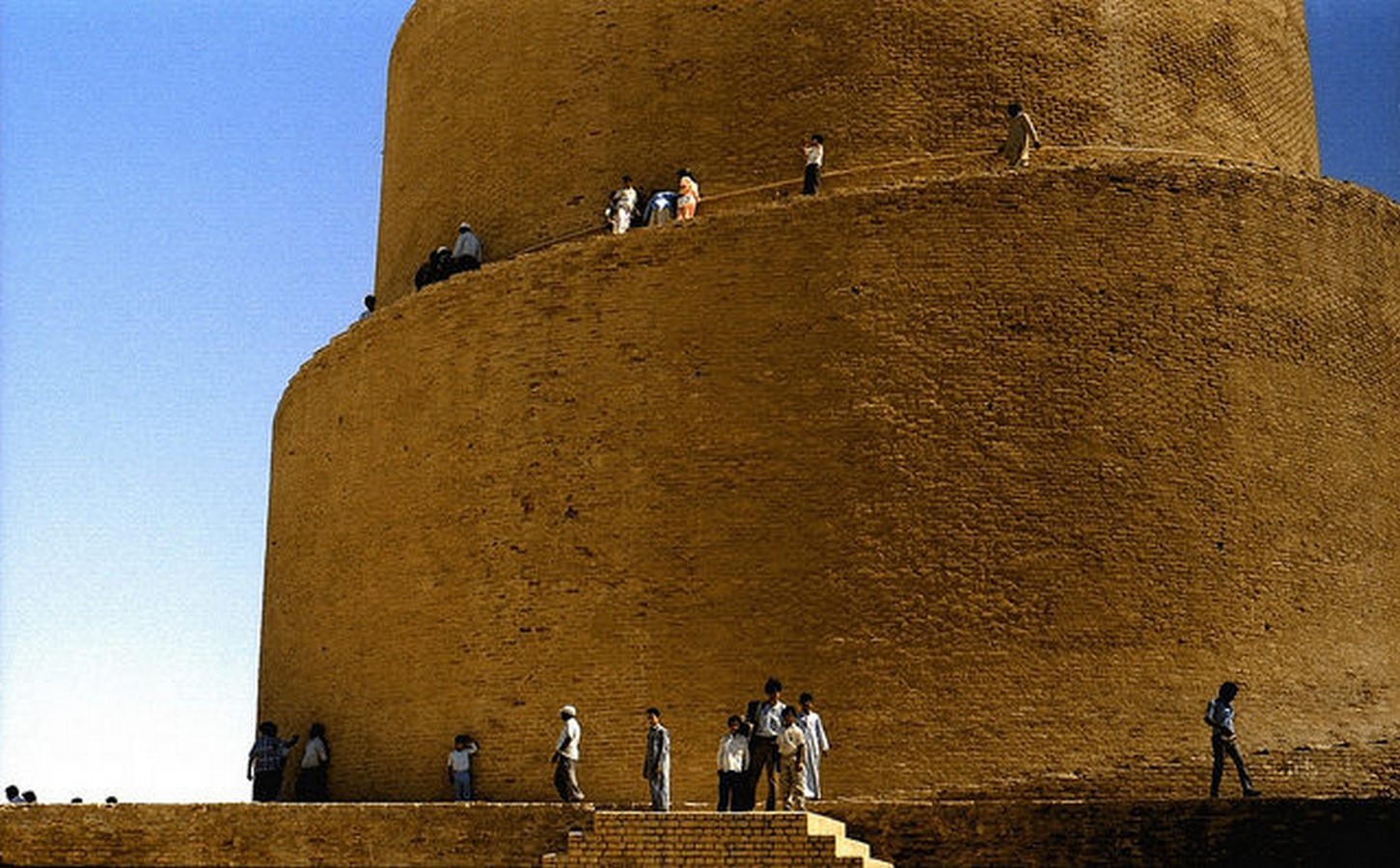


3. GREAT MOSQUE OF KAIROUAN
Islamic Heritage in the historic town of Kairouan, Tunisia, is a unique example. The Great Mosque of Kairouan has helped make strides in the evolution of Islamic architecture and its distinctive elements of design.
This Mosque is prominent for the first recorded use of the horseshoe arch, a prototype for all later mosques in the Maghreb.
The rectangular plan of the mosque consists of a courtyard tiled with marble, and a hypostyle prayer hall, each column spanned with horseshoe arches and a square minaret.
Outwardly, the mosque looks like a heavy mass of buttressed fortifications, ochre-colored walls built with baked bricks and rubble stones. The mosque at Kairouan is a step in the initial processes of defining the style and character or Islamic Architecture.
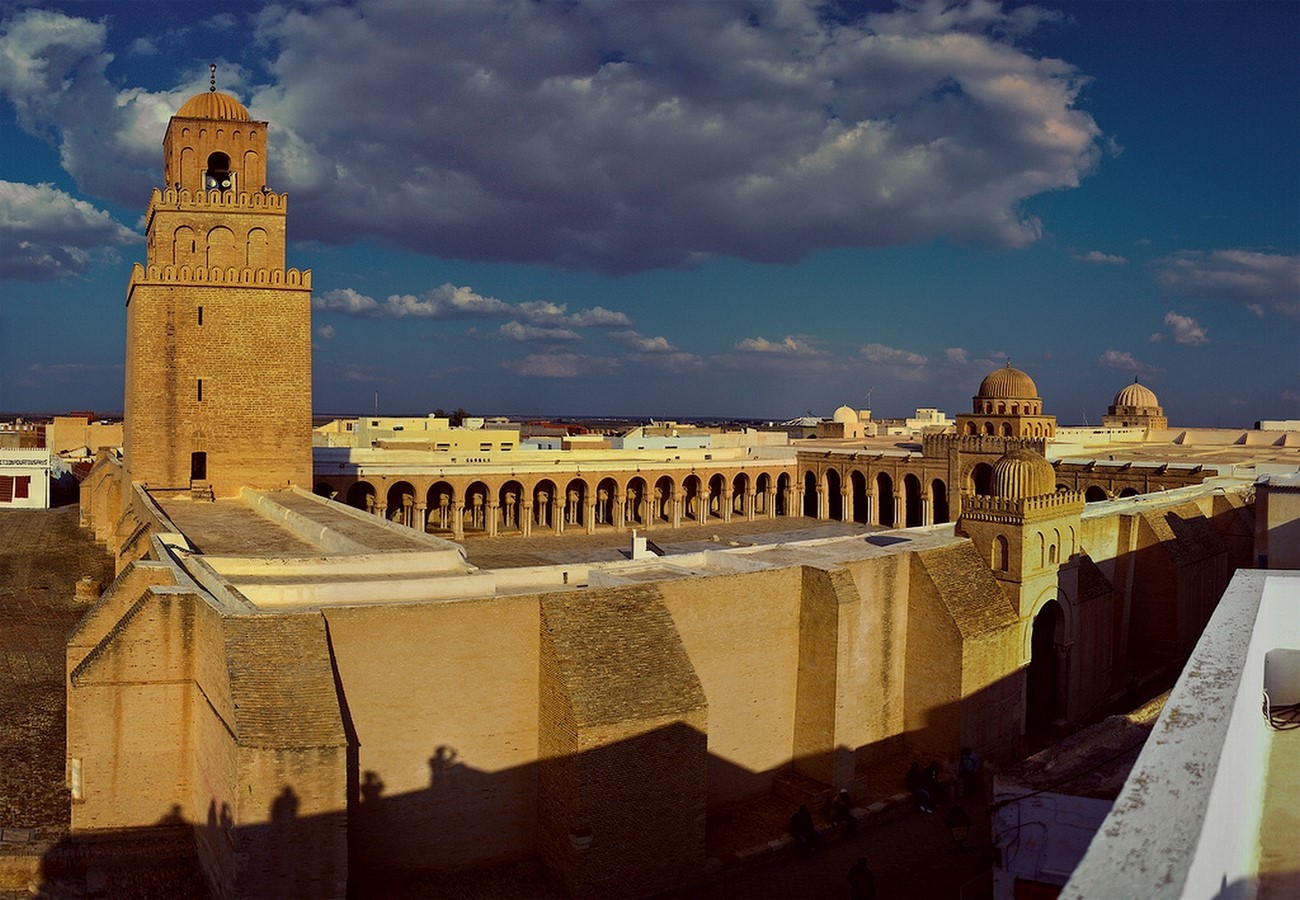
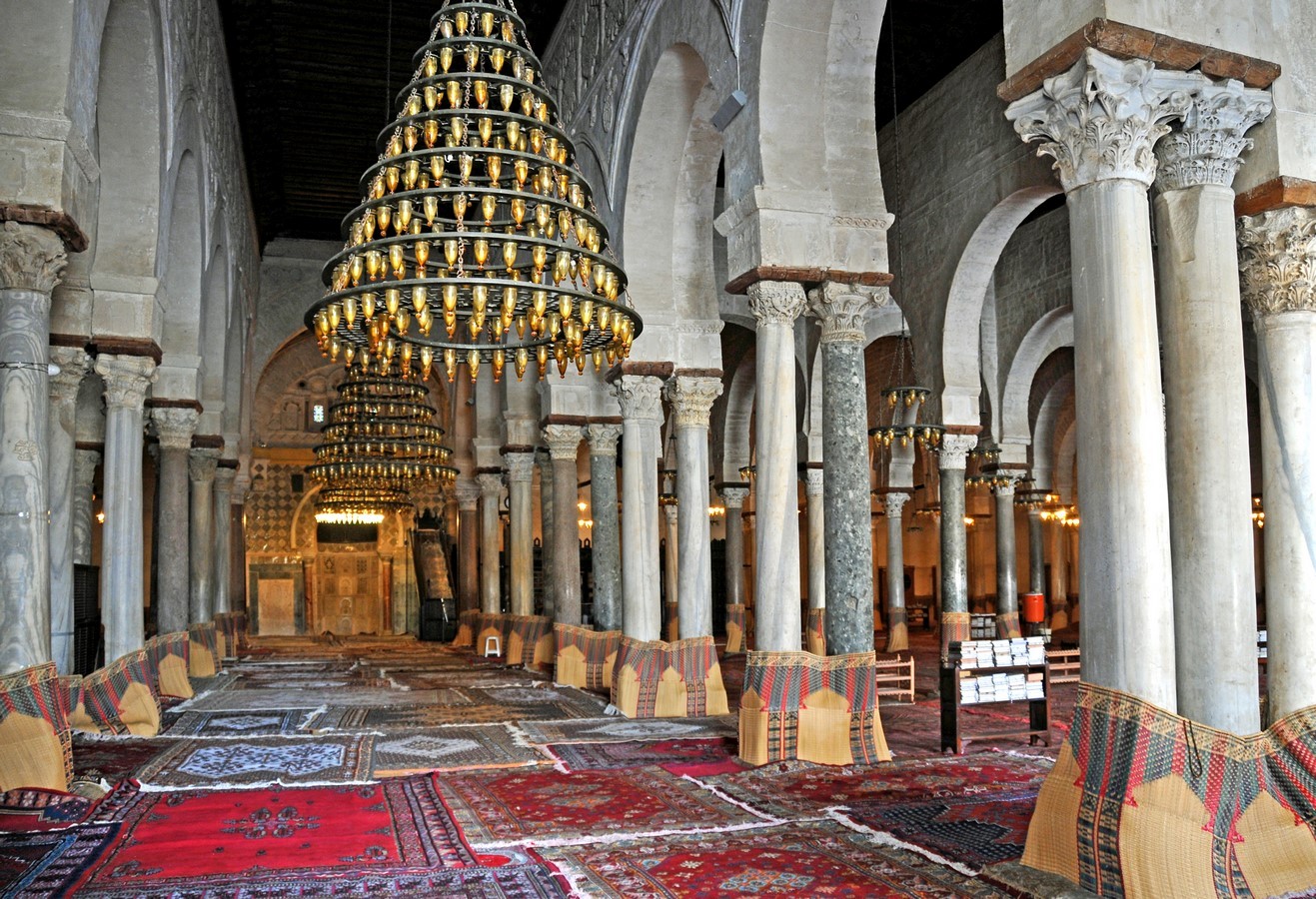

4. DOME OF THE ROCK
Dome of the Rock is one of the oldest extant works of Islamic Architecture. Built by the 7th century Umayyad Caliph, this monument rests over a large rock sacred to both Muslims and Jews.
The Prophet Muhammad is believed to have ascended into heaven from the site. In Jewish tradition, it is here that Abraham, the first patriarch of the Hebrew people, is said to have prepared to sacrifice his son Isaac.
The structure, detailing and architecture signals to Early Byzantine techniques but the dome and the monument’s overall appearance alludes to the emergence of the Islamic style of architecture.
The gilded wooden Dome of 20m diameter rests on an elevated circular drum supported by 16 piers and columns, surrounding which is an octagonal arcade of 24 piers and columns. The interiors of this shrine are decked with marble mosaics and metal plaques. It is one of the few starting points of Islamic architecture that flourished in the coming years.
From <https://www.britannica.com/topic/Dome-of-the-Rock>


5. SANA’A
The mildly camouflaged city of Sana’a appears to belong to the earth, born from the ground, like a natural landform.
Its many-storied buildings represent a response to providing spacious quarters for the number of residents within defensible city walls. The buildings demonstrate exceptional craftsmanship in the use of local materials and techniques.
The structures of the city, made of ochre-colored rammed earth and burnt bricks on stone rise tall, and their facades are peppered with punctures ornate by White-Gypsum. While each opening in a building offers similarities of color, patterns on windows, shape, alignment, positioning, and size, each opening is different from the other.
Sana’a became one of the first United National World Heritage Sites in 1986.
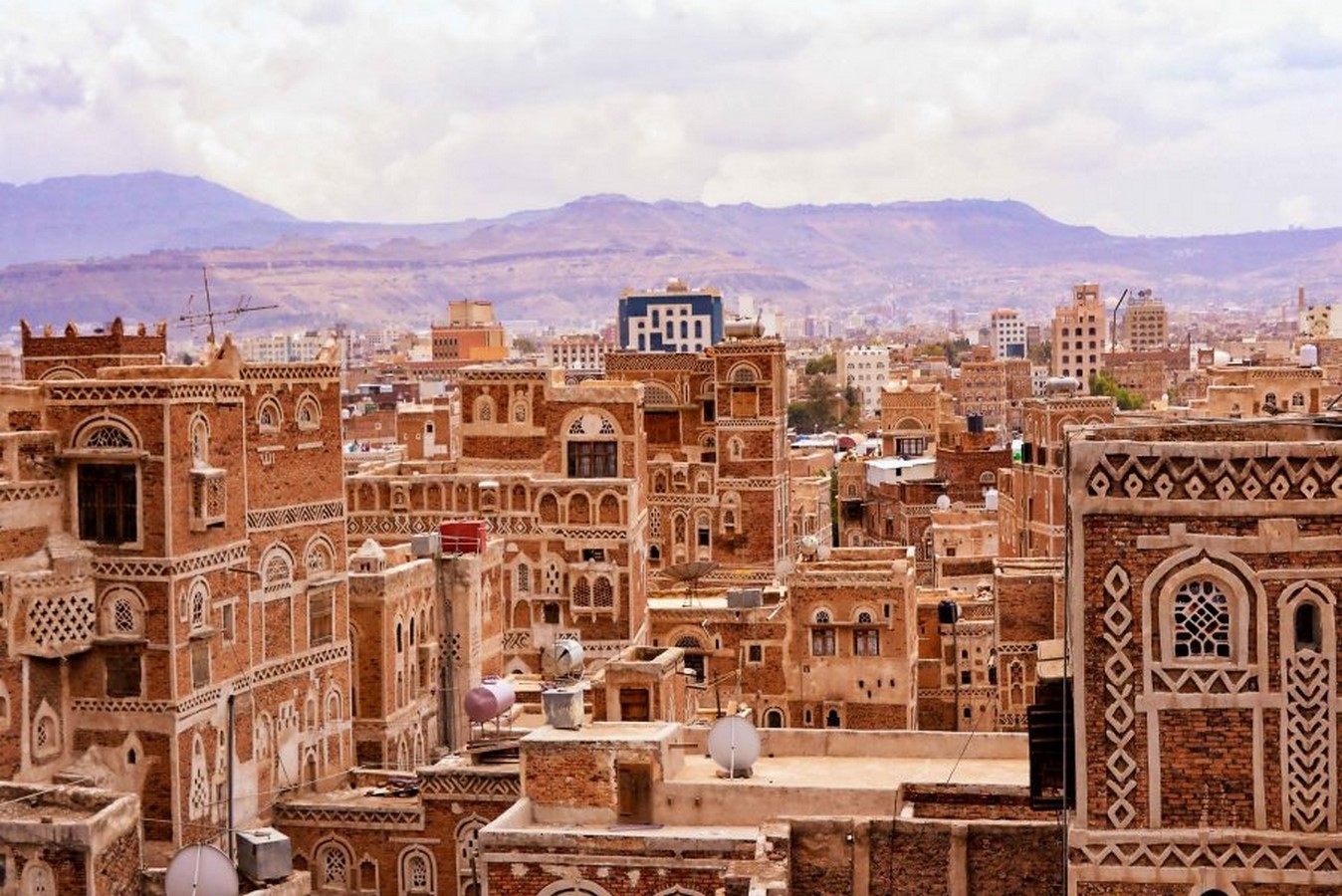
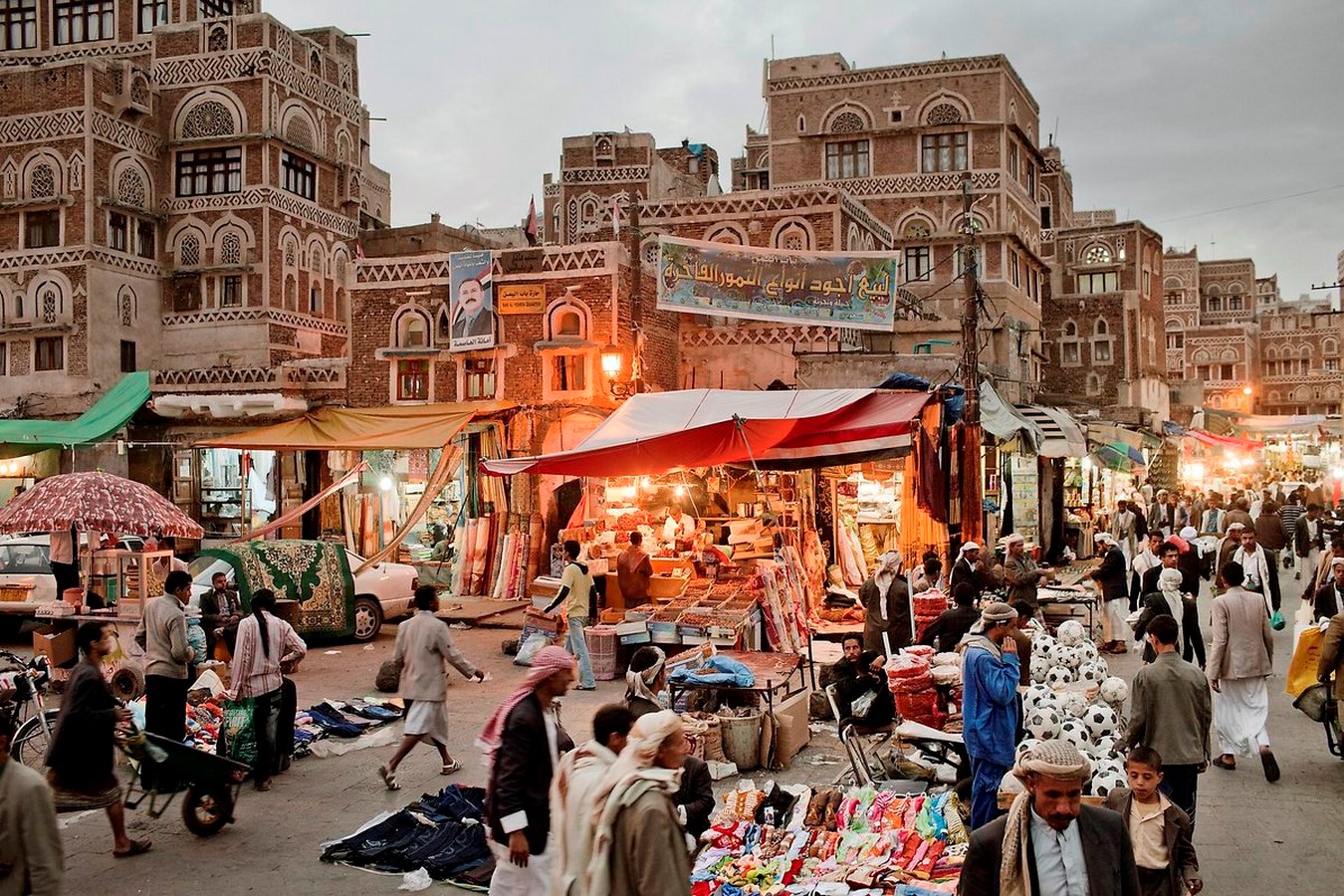
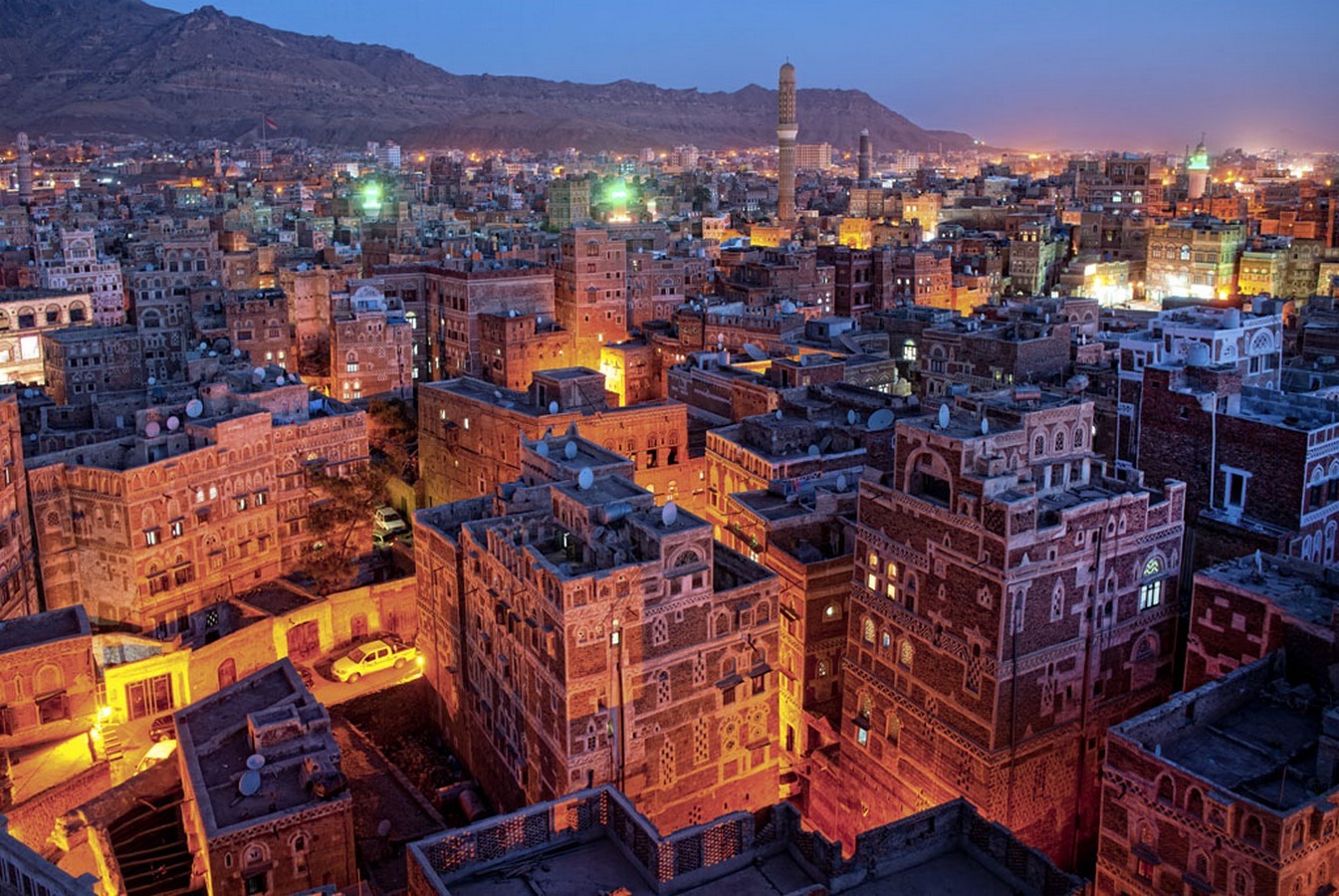
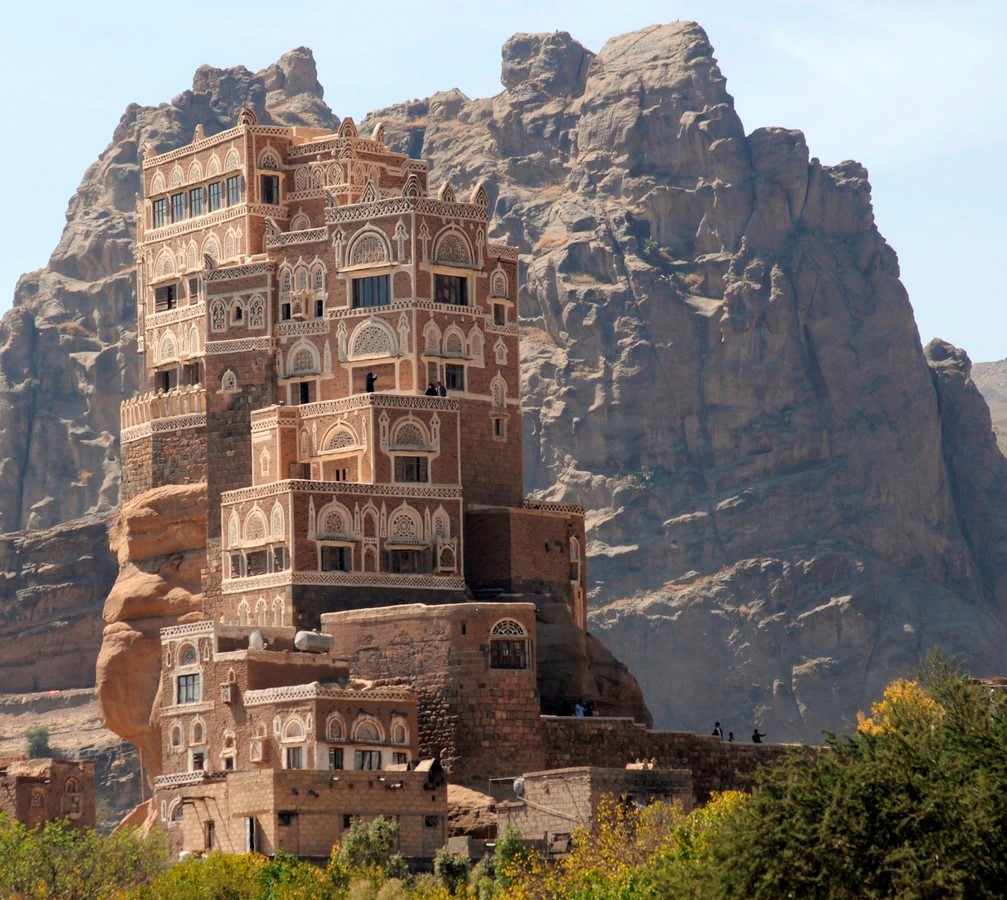

6. ALHAMBRA
Alhambra is an emblem of the vestigial centuries of the Muslim rule in Spain. The structure, with the name meaning ‘The Red One’ was constructed on remains of old Roman fortifications in AD 889, reconstructed by the Nasrid Dynasty in the mid-thirteenth century.
The palace buildings of reddish-ochre bricks were designed to be quadrangular, looking inwards to a courtyard. More quadrangles were added to the grounds with each Muslim ruler that lived in Alhambra, all opening into inner courtyards connected to other quadrangles via small rooms and passages. Column arcades and reflecting pools embellished the grandeur of the spaces.
While Islamic in origin, the Alhambra acquired many cultural attributions throughout the ages and was recognized as a UNESCO World Heritage Site.
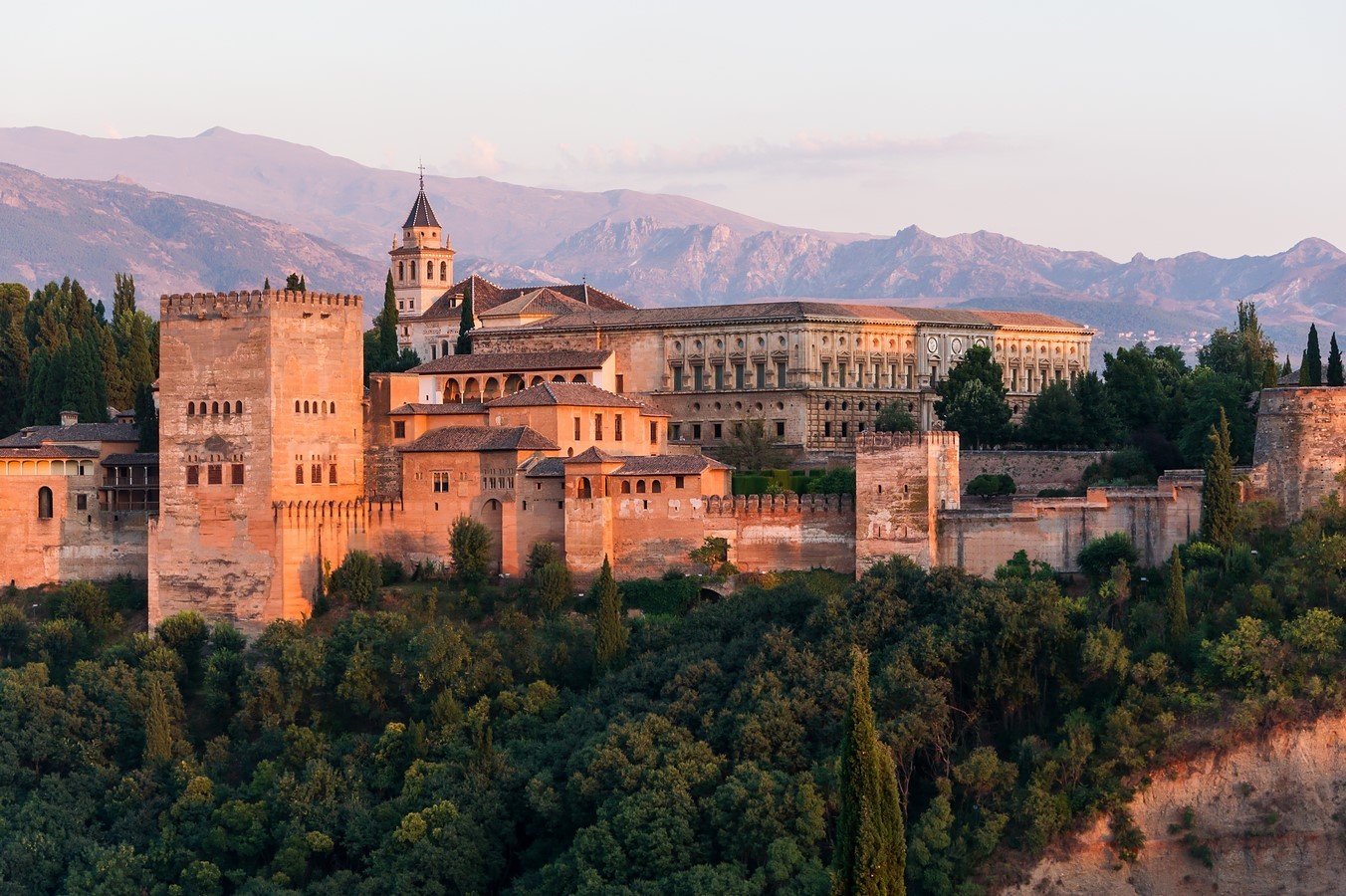
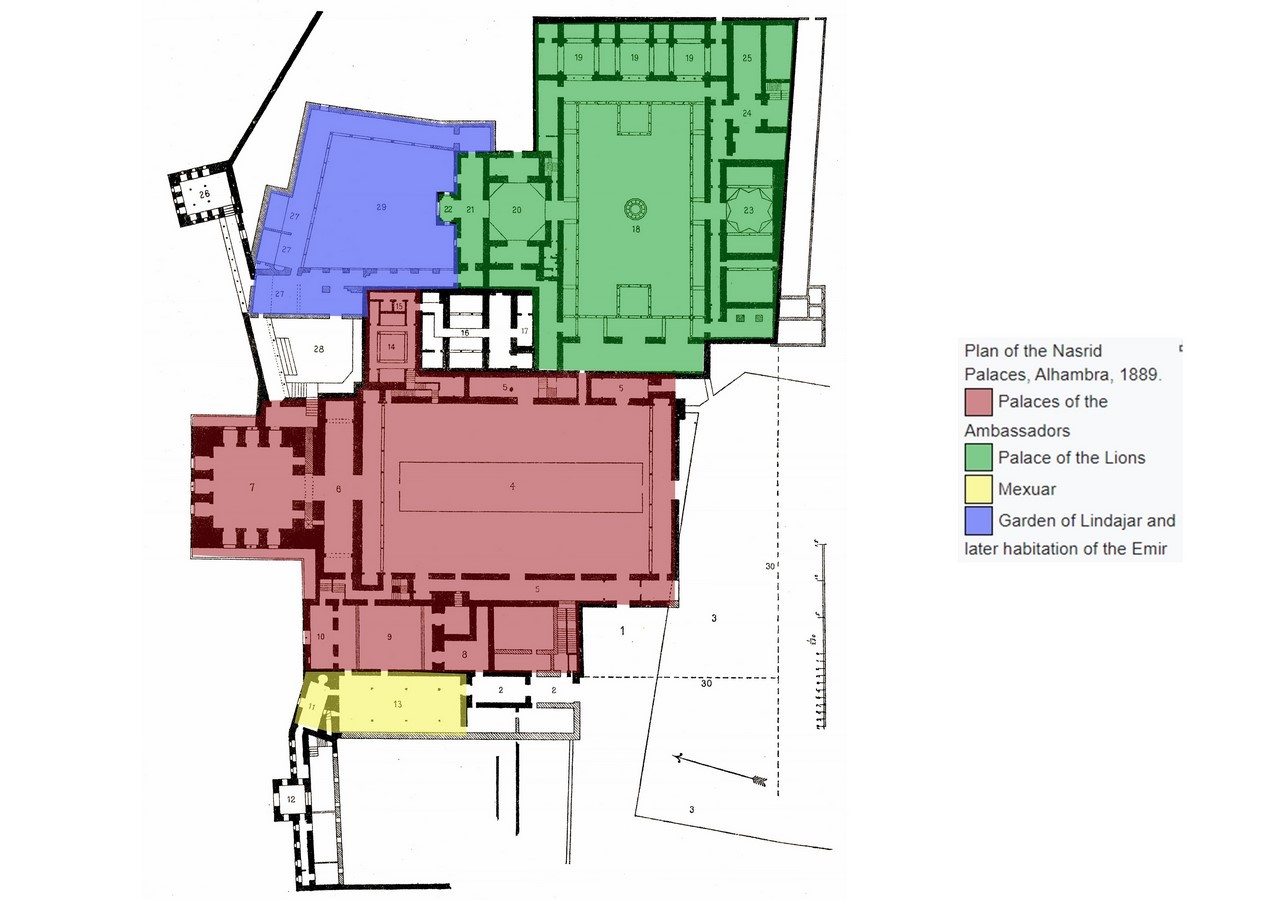

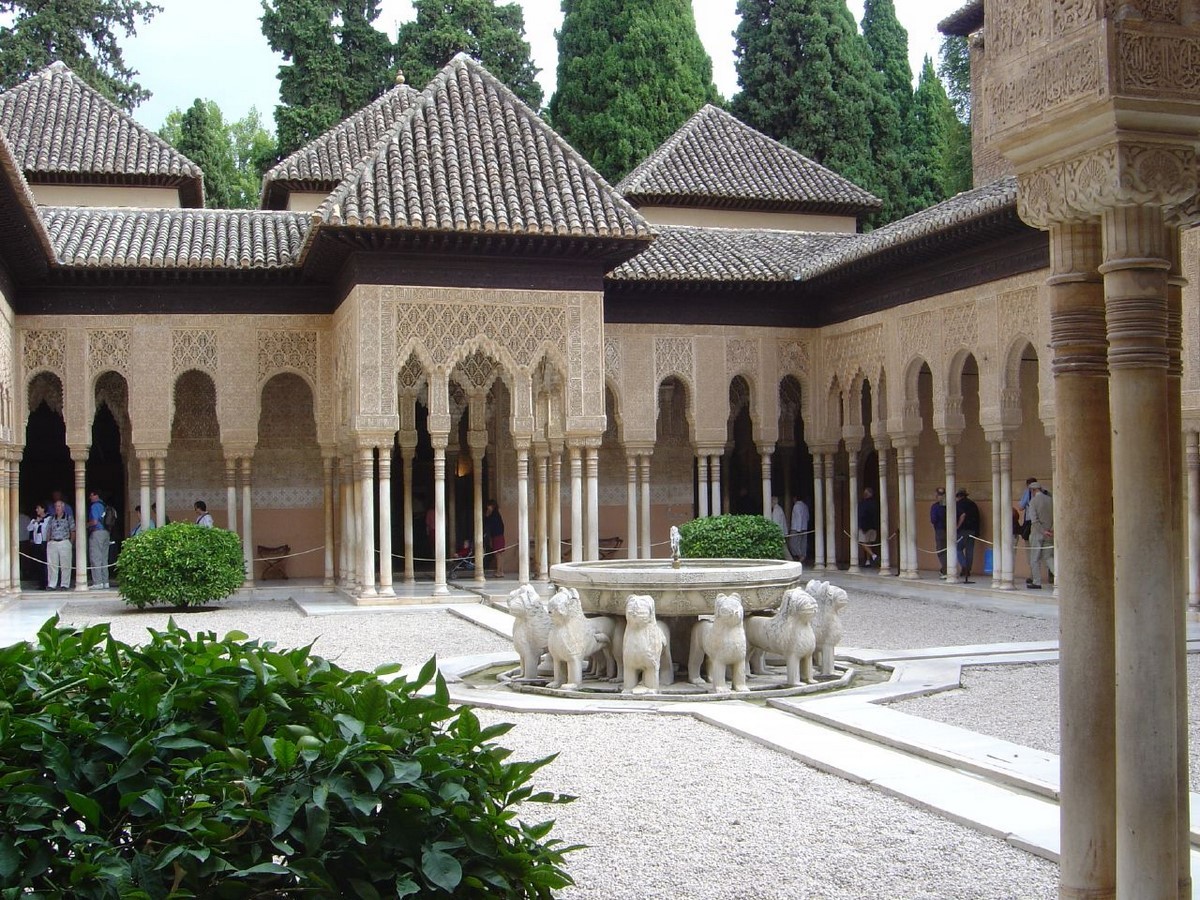

7. TAJ MAHAL
The elegant mausoleum of white marble in Agra, India, is emblematic of Shah Jahan and his wife Mumtaz Mahal’s love. The Taj Mahal took 16 years to construct, under the guidance of architect Ustad Ahmad Lahauri. The gardens welcome visitors with the refined geometry of the Charbagh style, divided in the middle by sheets of water that act as a reflecting pool.
The facades of the tomb structure were decorated with delicate inlaid work and inscriptions from the Quran. The structure rests on a marble plinth, at the four corners of which rise slender minarets, each crowned with a single chhatri.
The large central hall is octagonal and resting in the middle are the sepulchers of Shah Jahan and Mumtaz Mahal. The three large arches, save for the one on the Southern façade, are sealed with beautiful perforated marble screens. On either side of the mausoleum are two red sandstone structures that match the architecture of the main tomb. The Taj Mahal’s beauty and symbolism captured worldwide attention and was declared to be a UNESCO World Heritage Site in 1983.
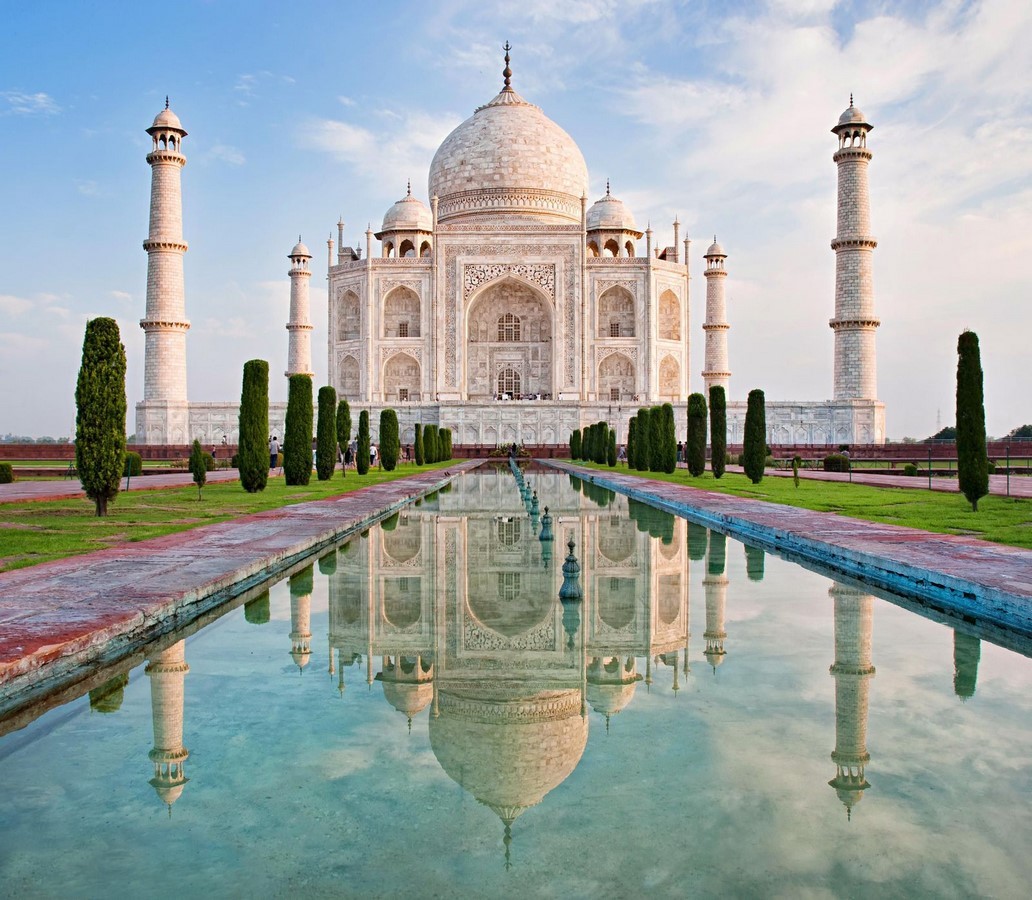


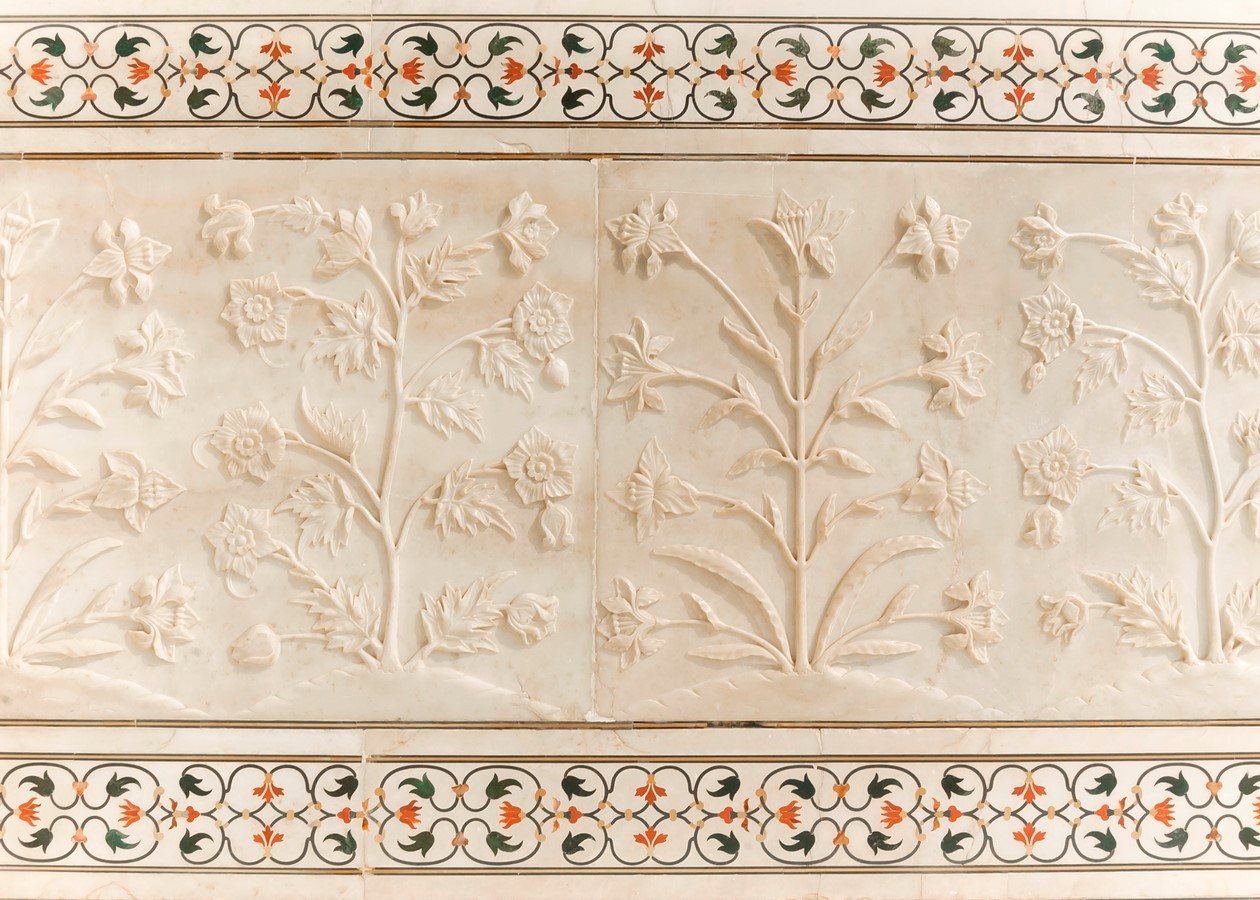


8. HUMAYUN’S TOMB
Constructed in the 1560s by the Great Emperor Akbar, this mausoleum was first of its kind. It paved the way for the future of mausoleums in the country and has also been a source of influence for the design and key characters of The Taj Mahal.
This garden tomb follows the landscape principles of the Charbagh. The structure is made of dressed stone enveloped with a cladding of red sandstone. The façade is decorated with white and black marble inlay.
The structure of the tomb rests on a large, high plinth, the corners of which are chamfered.
Humayun’s tomb borrowed from Indian Architecture, namely Rajasthani styles as can be seen in the ornate corbel brackets, balconies, chhatris, and jaali designs. This tomb is a product of Islamic architecture fused with the Indian architectural styles, to form an exemplary example of Mughal Architecture in India.
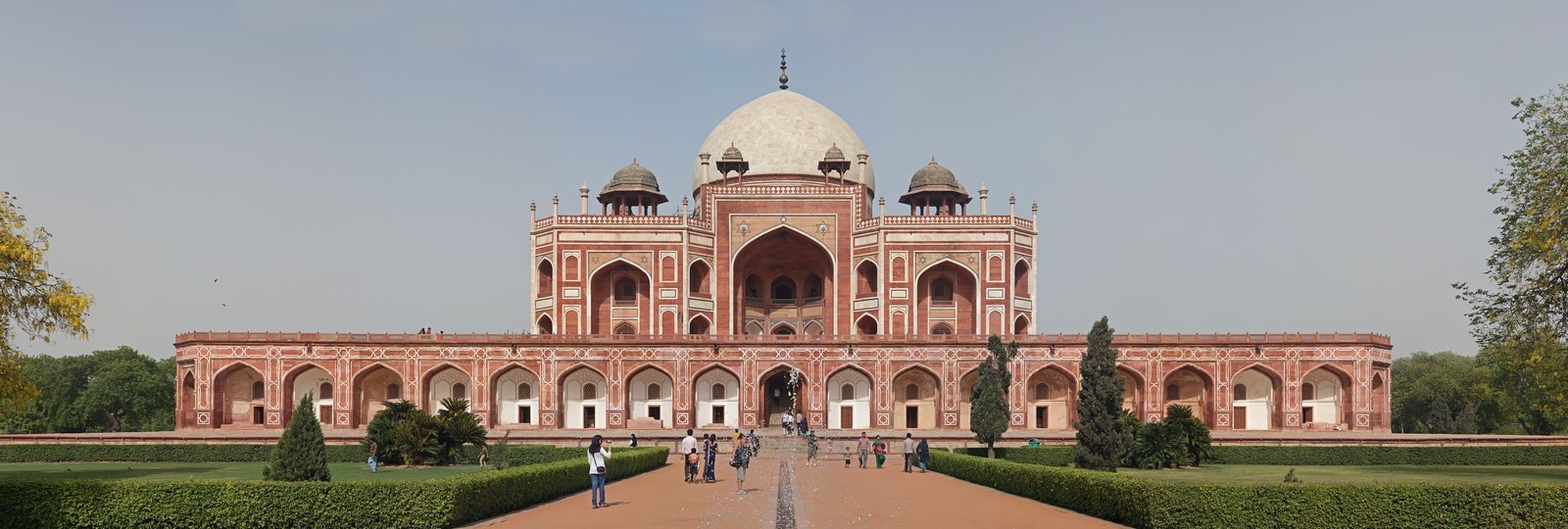


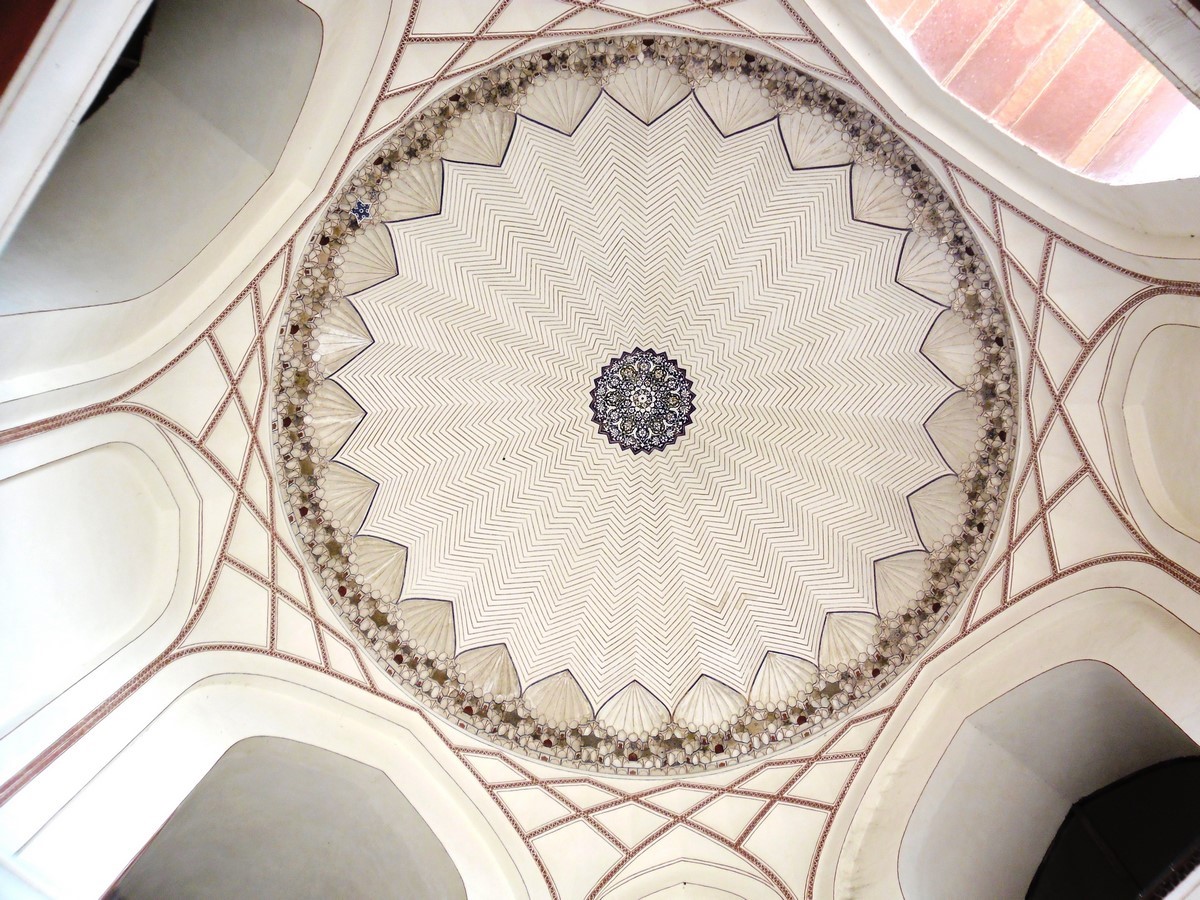
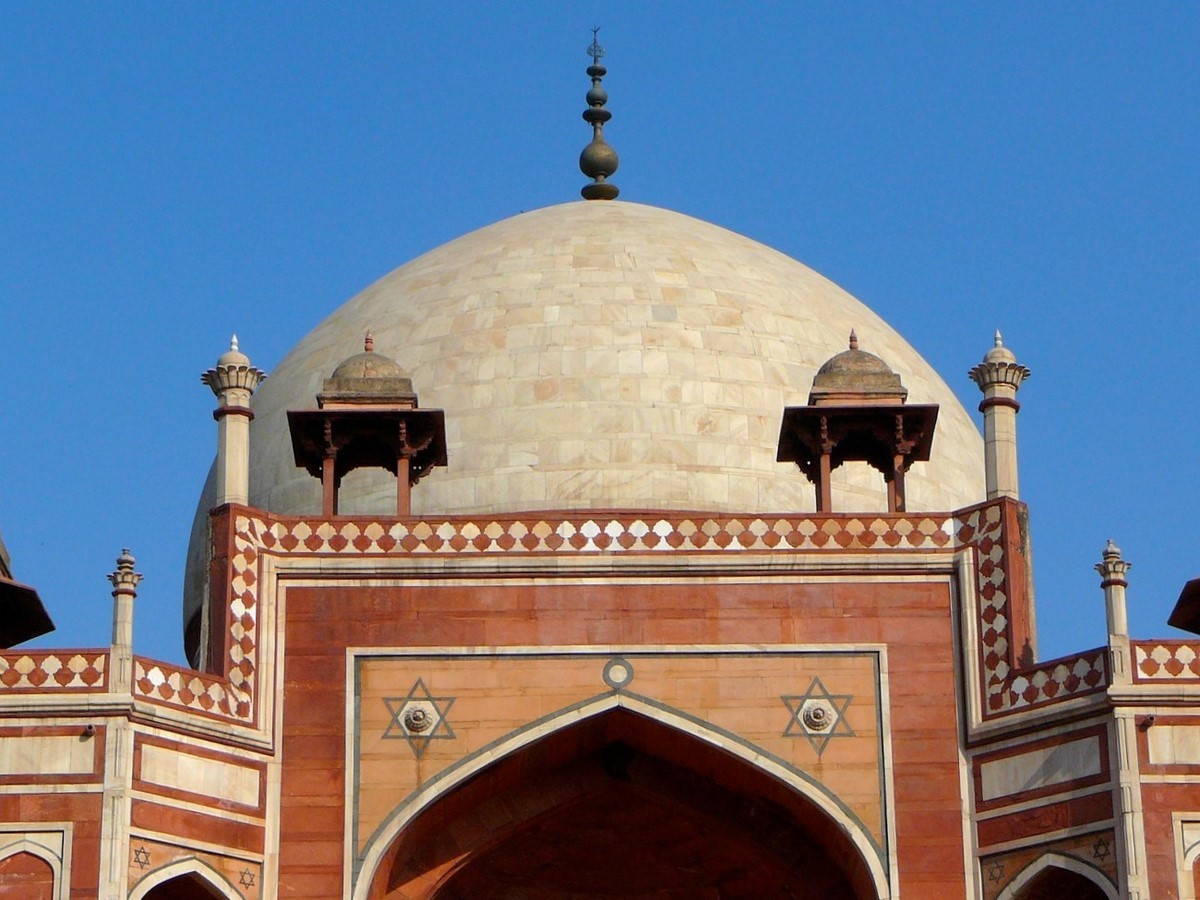
9. QUTB MINAR
The tall, tapering monument in the Qutb Complex of Mehrauli, Delhi, is the famous Qutb Minar, a minaret placed detached to its mosque. The tower rises five storeys tall, each section crowned at the top by a balcony that wraps around the circumference, the underside of which is decorated with stalactite bracketing. The interiors of the minar consist of a winding spiral staircase. The 14.32m base of the monument tapers to a 2.75m diameter at its last segment. The red sandstone structure alternates between rounded and angular flutings, interspersed with strips of inscriptions and elaborate detailing as is iconic of Islamic Architecture.

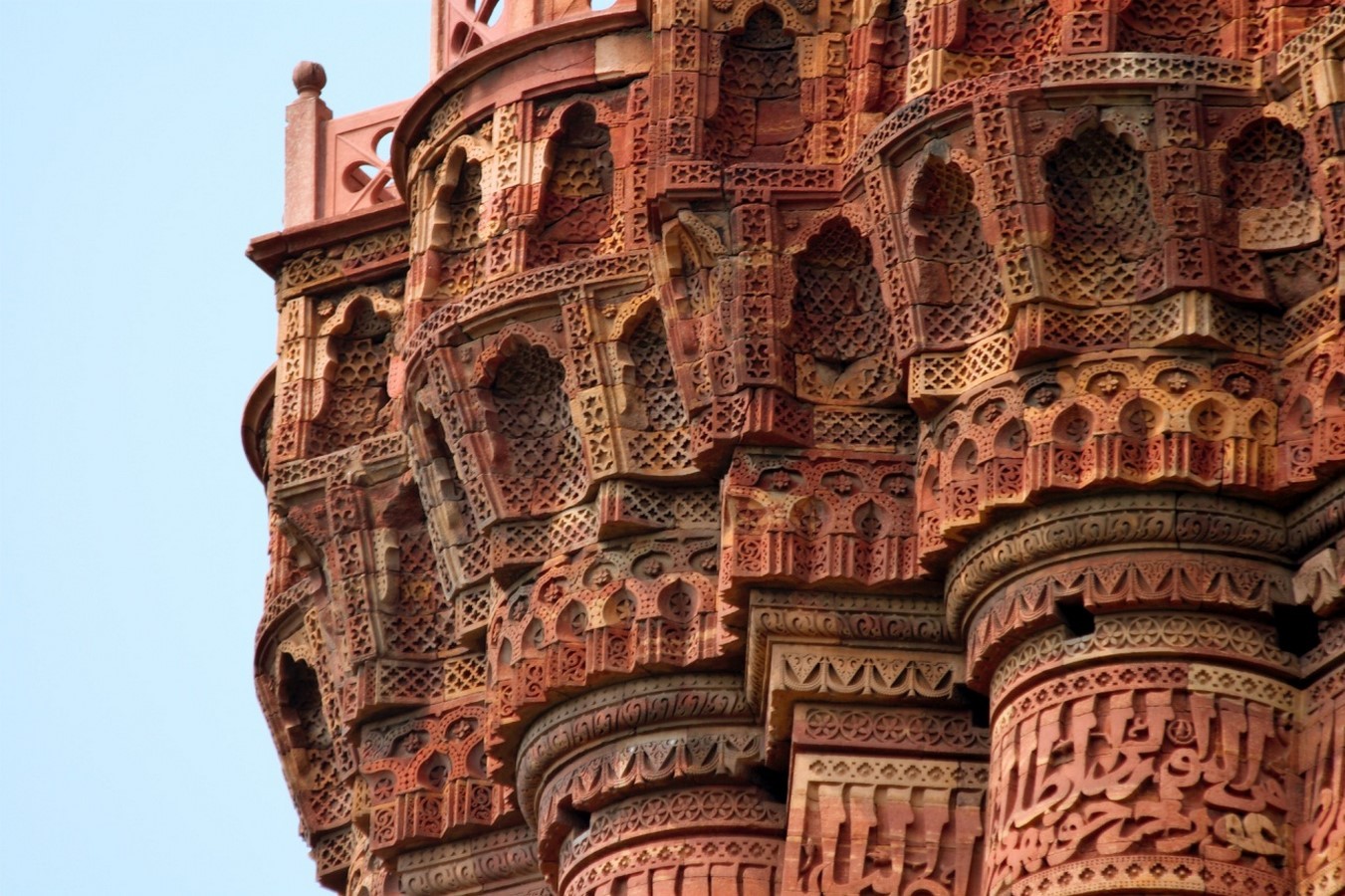
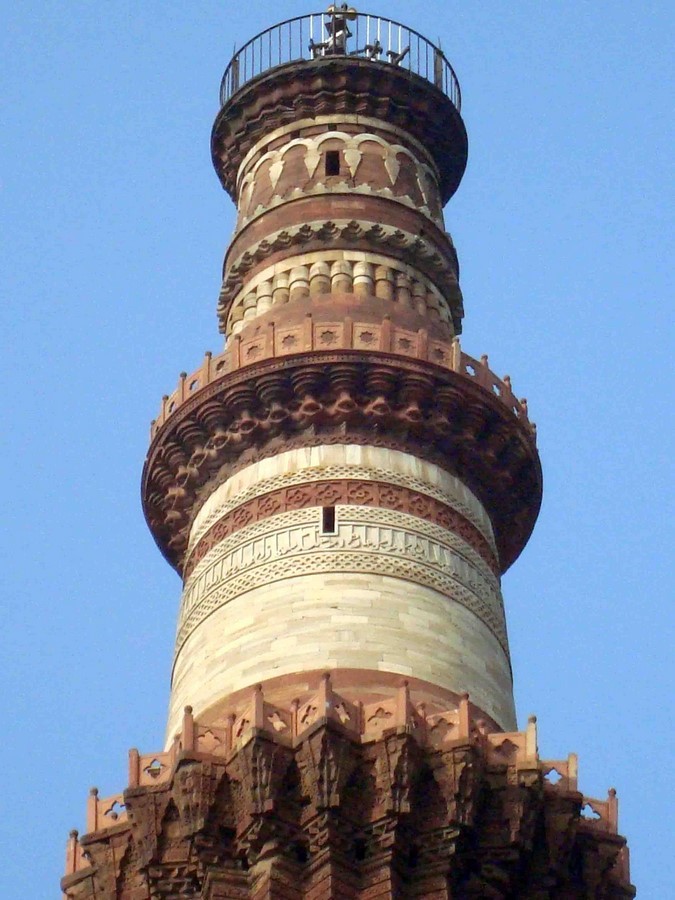
10. HAGIA SOPHIA
The Hagia Sophia in Istanbul is an architectural marvel, a reflection of Byzantine and Ottoman civilizations, initially used as a church for 900 years, later as a mosque for the next 500, and now as a museum.
The vast interiors of the Hagia Sophia are punctuated by the large dome that rises to a height of 55.6m while resting on an arcade of arched windows. This dome is flanked on either side by two half-domes which create an oblong layout. The exterior stucco work tinted red and yellow is a subdued contrast to the purple porphyry, polychrome marbles in green and white, with gold mosaics.
The Hagia Sophia stupefies every visitor with its thoughtful engineering and historical beauty.




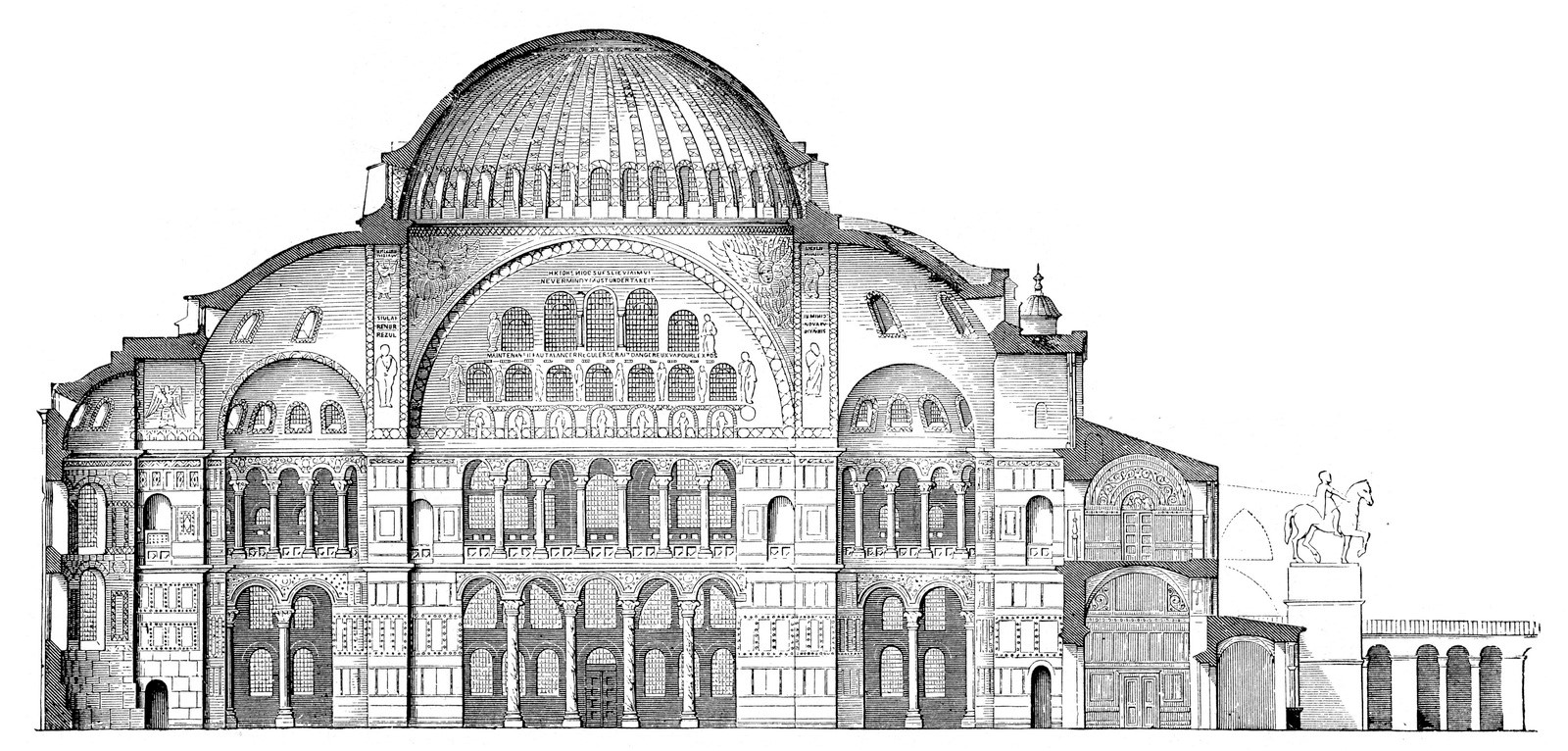
11. SULEYMANIYE MOSQUE
The Suleymaniye Mosque was a masterpiece envisioned by the Imperial architect Mimar Sinan. The Mosque followed in the footsteps of the Hagia Sophia, although in smaller dimensions. The entrance to the mosque is preceded by a courtyard displaying a central fountain. This courtyard is wrapped by a colonnaded peristyle of marble, graphite, and porphyry.
The interiors of the Mosque were enhanced by stained glass windows and rectangular tiles around the mihrab. A large, beautiful chandelier hangs in the center of the large dome and punctuates the oblong interior chamber with a grand focal point.
The Suleymaniye Mosque was incorporated in the UNESCO World Heritage list as a part of the Historic Areas of Istanbul.

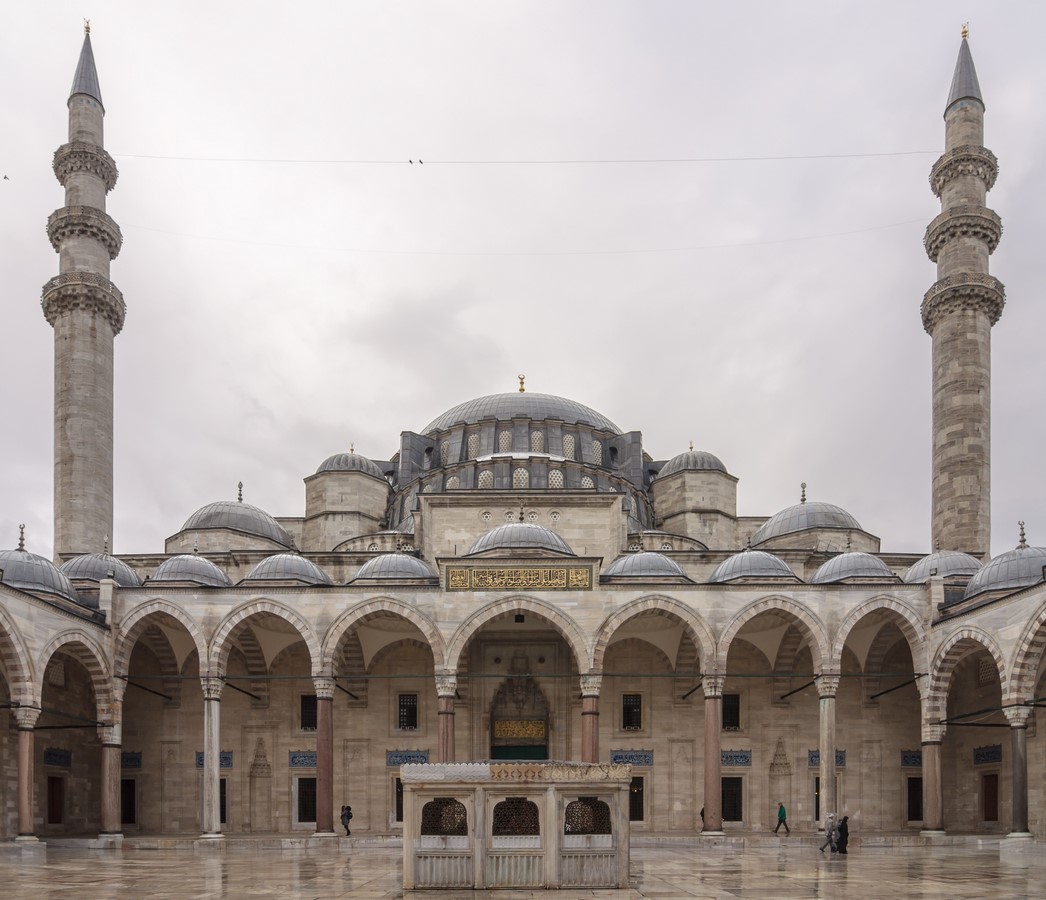


12. SULTAN AHMED MOSQUE (BLUE MOSQUE)
The Sultan Ahmed Mosque, also known as the Blue Mosque, sits next to the Hagia Sophia in Istanbul. Islamic Architecture of Istanbul reached its apogee with the Blue Mosque. It was larger and a synthesized version of Mimar Sinan’s masterpieces. Comprising five full domes, six minarets, and a total of 8 semi-domes, the Blue Mosque incorporates its parent Byzantine styles with a blend of traditional Islamic elements and is considered the last great mosque of the Classical period.
The interior of the Blue Mosque is hand-painted blue towards the upper part. 200 stained glass windows puncture the structure and beautiful tiles line the lower levels, with hand-painted tulip designs.
The Blue Mosque is recognized as a UNESCO World Heritage Site as a part of the larger Historical Area of Istanbul.


13. JAMEH MOSQUE OF ISFAHAN
The Jameh Mosque of Isfahan is one of the oldest mosques of Iran. It is also the first Islamic building that adapted the four courtyard layout of Sassanid Places to Islamic Architecture by way of Four-Iwans or elaborate arches that act as entrances. These wwans open into the courtyard in the middle. Each of the Iwan facades is adorned with vibrant blue, green, turquoise, red, and cream motifs and arabesques.
The urban character of Isfahan and the souks outside have hence worked in tandem with the heritage of the Jameh Mosque. It was recognized as a UNESCO World Heritage site in 2012 owing to its influential role in the evolution of Islamic Architecture.


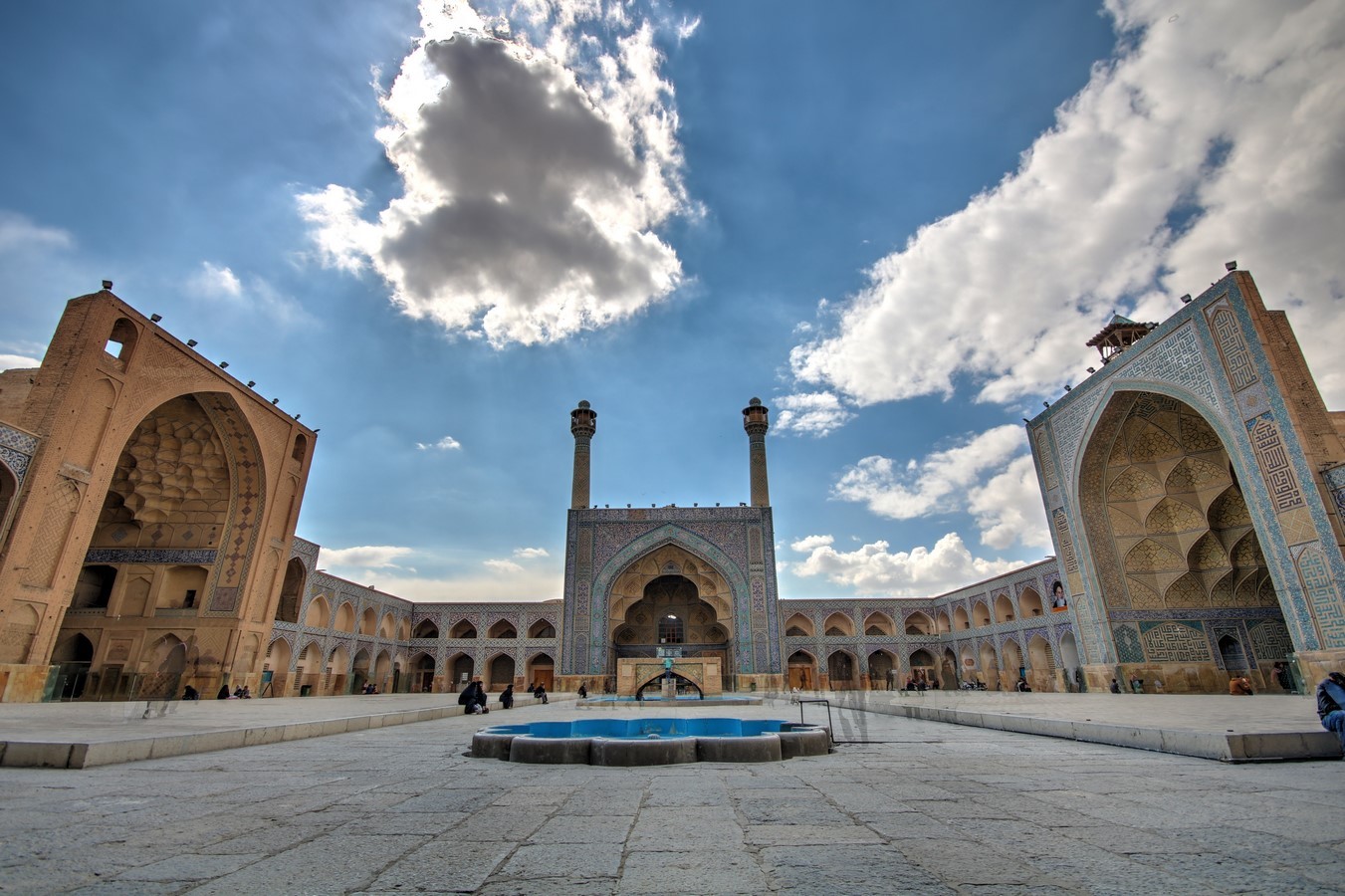

14. NAQSH-E-JAHAN SQUARE ISFAHAN
To the south of Tehran lies an old town named Isfahan. Naqsh-e Jahan Square located at the center of the city existed as the heart of the city. The square is surrounded by buildings from the Safavid era that opens into the Isfahan Grand Bazaar at the northern side. The hub of most congregational activities; this square was an area where festivities, polo, dramatics, and military parades took place.
The Square was a successful public space thriving with life and commotion of the residents. It is the largest historical public square in the world after Tiananmen Square in Beijing. The Naqsh-e-Jahan Square, although World Heritage, portrays an allure that emerges from being simple and magnificent.
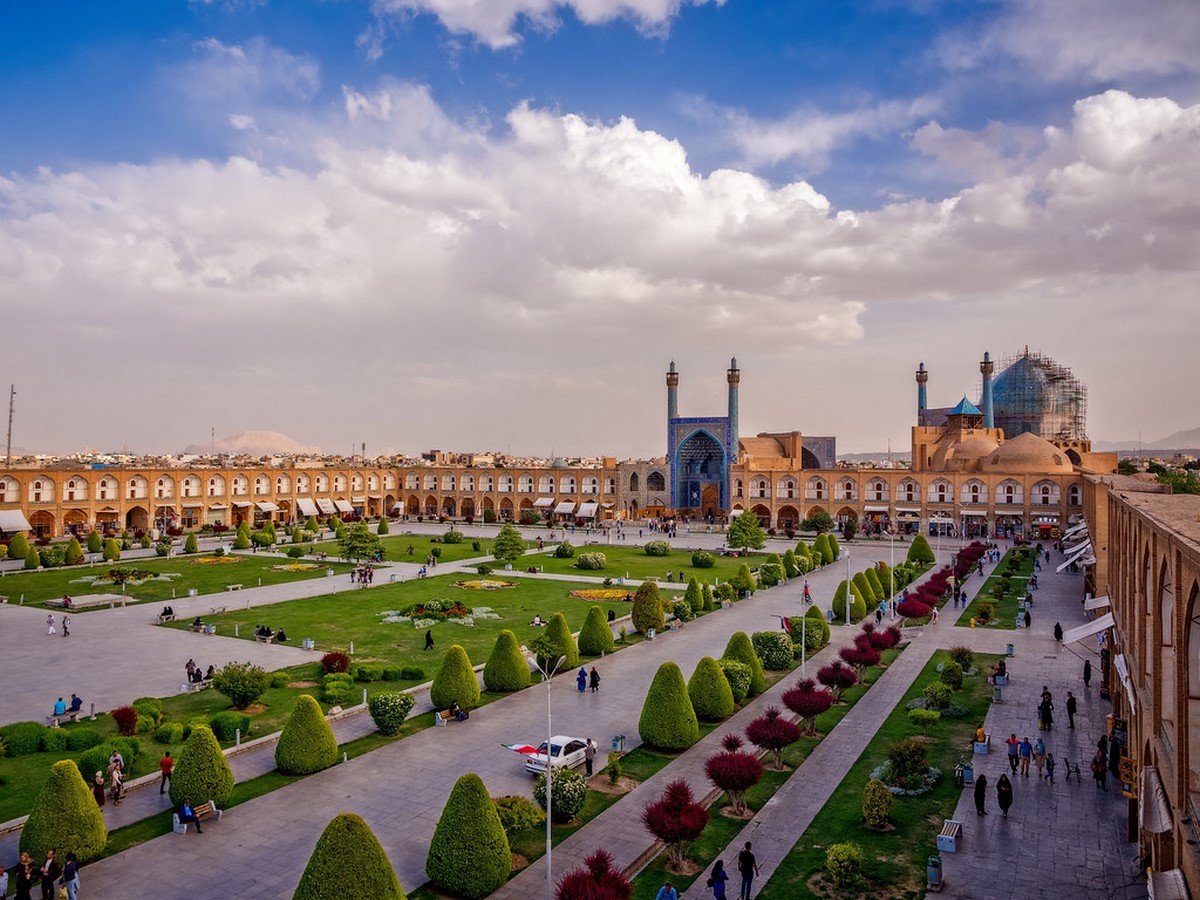

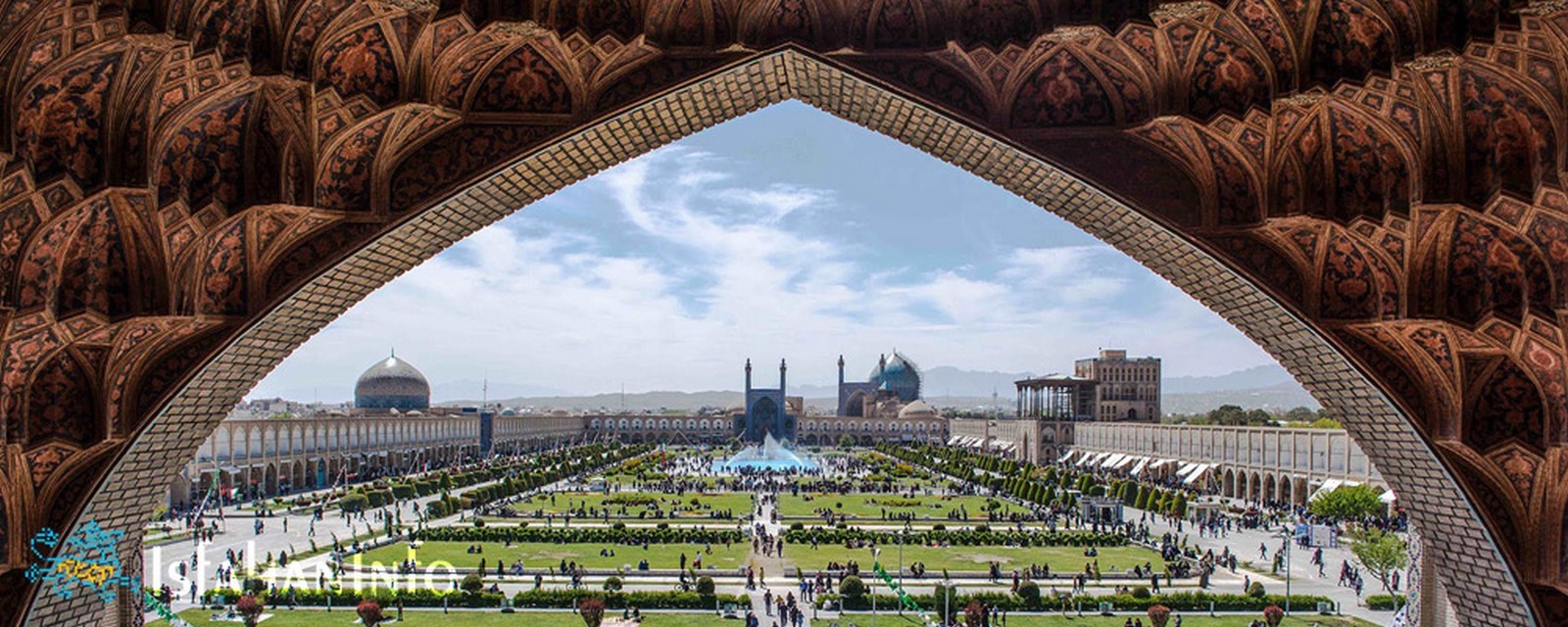

15. THE GREAT MOSQUE OF CORDOBA
Residing on the original site of a church, the Mosque of Cordoba was constructed and expanded by the Umayyads. The rectangular site consists of a courtyard with a fountain in the middle, distinctive of Islamic design. A colonnaded walkway surrounds this courtyard. The gardens are vegetated with orange trees and other flora.
The most exemplary feature of the Mosque of Cordoba is the hypostyle hall which comprises approximately 850 columns, all clad and decorated with porphyry, jasper, and spanned by marble horseshoe arches.
This hall imposes on a visitor the impression of infinitely endless space, enunciated by rows of columns and arches. The mosque also houses a minaret which is now cloaked with a square tapering bell-tower. The phasing of the Christian history of the site into an Islamic icon of architecture is seen in this Mosque.





